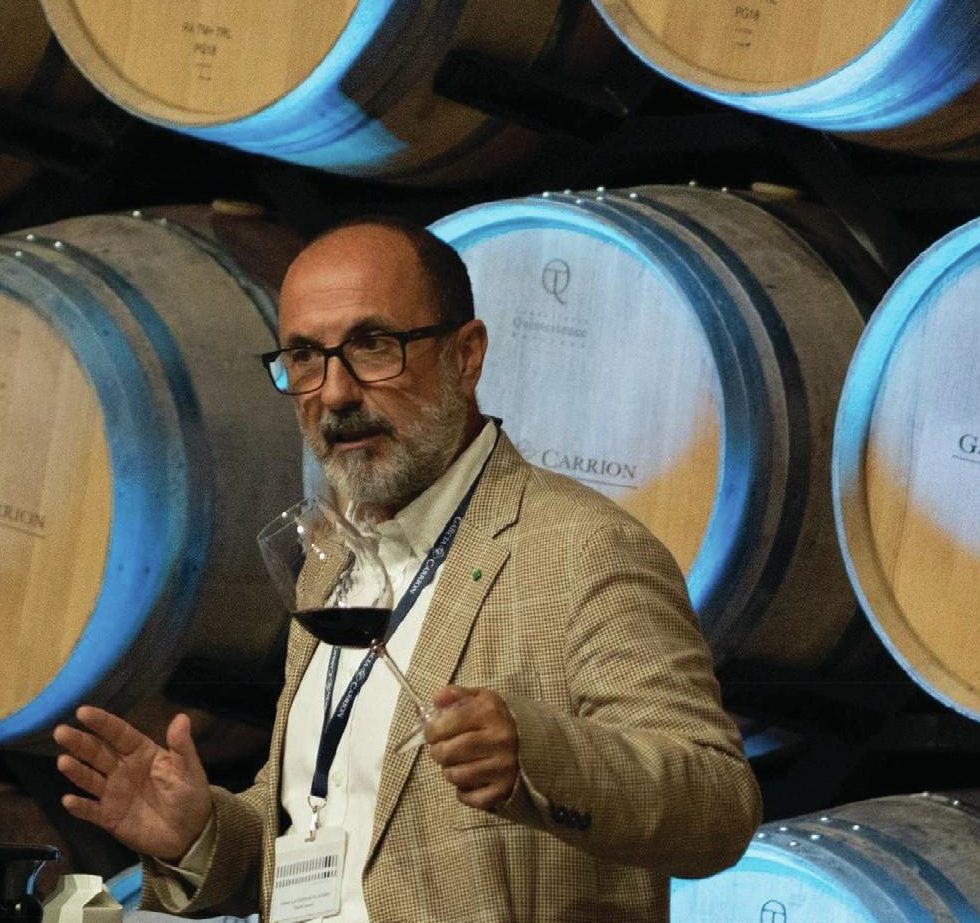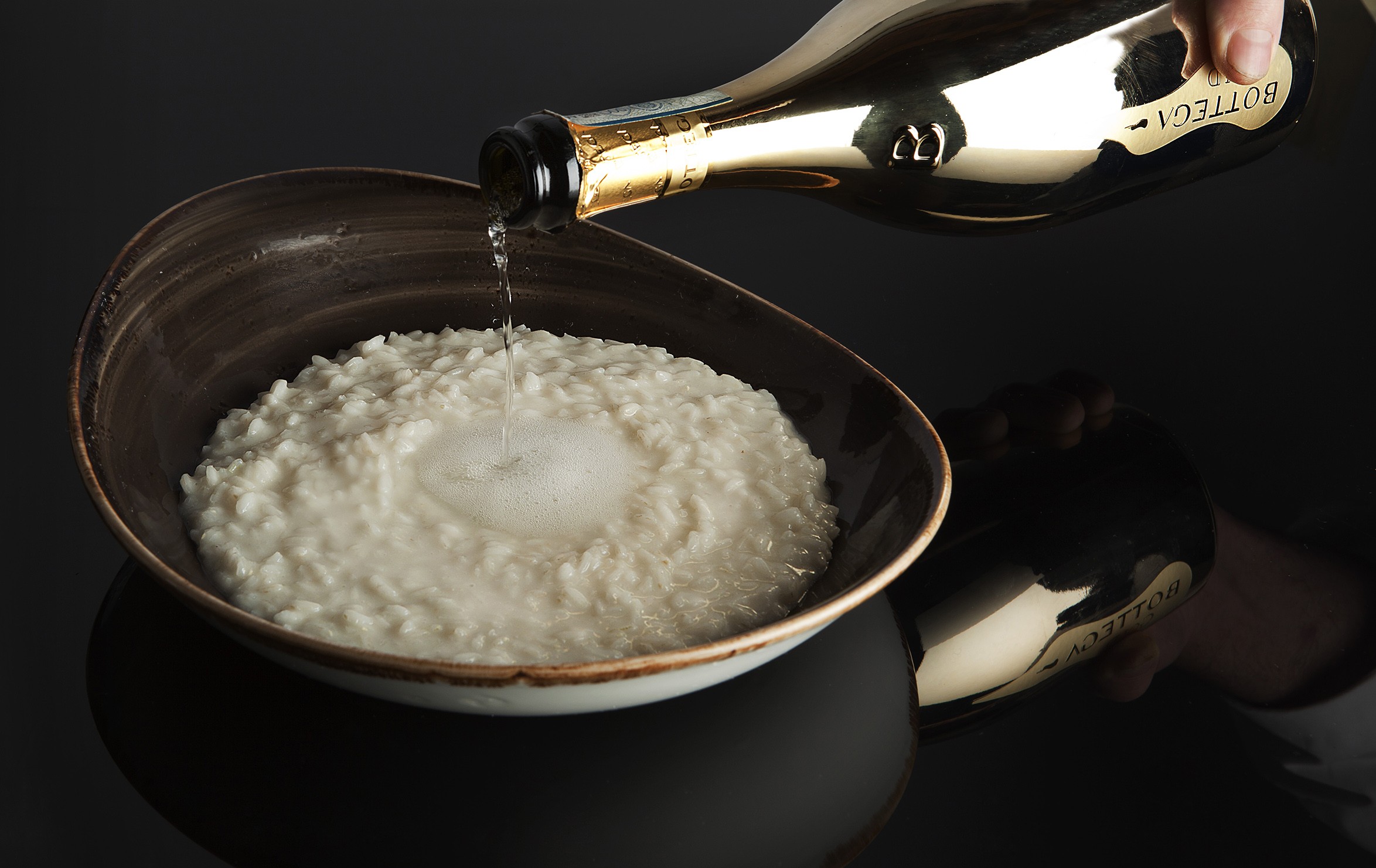Green issues drive innovation in wine closures
The environmental impact of stopper production and disposal is rising in prominence – but how green is your closure?
Just when you thought that the closure debate was coming to an end, a new source of contention has arisen. And no, it’s not a new taint, or a fresh claim concerning oxygen transmission rates.
Rather, as this month’s edition of the drinks business highlights, today’s hot topic is the environment – that is, the effect on the planet of producing and disposing different types of stopper.
So why have the eco credentials of closure types come under the spotlight? One reason is the heightened awareness among consumers of green issues, particularly the carbon footprint of packaging and the problems caused by waste – exacerbated in the past year specifically by images of plastic pollution at sea in Sir David Attenborough’s Blue Planet II TV series.
An interest in the environmental credentials of closures is also coming to the fore as other problems for the sector diminish – most notably the topic of taints, above all those created by TCA.
Essentially, with the argument shifting from the technical performance of different stoppers, the environmental implications are becoming a decisive factor in the selection of closure type.
But just how green is your choice of stopper?
As Sally Easton MW reminds us in an extensive article in the February issue of db, the first life cycle assessment of closures is nearly 10 years old, but the results of the study are still relevant. And that’s because key to the difference in the eco credentials of the various types of closures is the material used, and these are still the same, for the most part.
This report was commissioned by Amorim and published in November 2008 by PricewaterhouseCoopers/Ecobilan, following a peer review. It showed that the whole-piece natural cork production produces the least CO2, and screwcaps the most – the mining and refining of aluminium used to make screwcaps is energy intensive. Plastic stoppers fall between the two extremes.
The production of cork, whether it is used for stoppers or not, has an environmental benefit, due to the cork forests managed for its production.
Free from pesticides or fertilizers, and planted at a low density, the cork forest is one of the most diverse natural habitats in the world, and it acts as a carbon sink. Indeed, the Portuguese cork forests are said to absorb 4.8m tons of CO2, representing an offset of 113.2g of CO2 per cork, according to the Cork Quality Council.
Responding to the stronger eco-credentials of cork, in 2013, Nomacorc created “the world’s first zero carbon-footprint wine closure”. Called Select Bio, it is partly made with plant-based polymers derived from sugar cane, and, the manufacturer says, the bio-plastics contribute a negative carbon footprint value that fully offsets the positive emissions originating from conventional raw materials in the product.
As Easton points out, not only is Nomacorc now being rebranded as Plantcorc, but it is also spearheading the creation of a new closure category: ‘renewable alternatives’. Nevertheless, bioplastics themselves aren’t free from controversy, not least because the farming of the sugar cane used in their production has its own ecological implications.
CO2 production is not the only environmental issue facing closures – there’s also the issue of water waste to consider. When water consumption during closure production is considered, plastic stoppers use the most and screwcaps the least, while whole-piece natural corks fall approximately between the two. So, while aluminium products require a lot of energy in their production, the use of water is minimal for the creation of a screwcap.
While the single-piece natural cork is deemed relatively clean, it is important to note that micro-agglomerated corks have different properties and production requirements.
Partner Content
In a Nomacorc study on carbon emissions published in April 2008, before the Amorim report, it was shown that agglomerated corks have a higher Carbon Footprint than the synthetic closure. This is down to the processing of the cork granules – Amorim washes them using water at 70ºC then puts them through a steam-distillation process called ROSA. This is to remove any potential wine-spoilage compounds. Diam treats cork granules for the same reason, but uses the Diamant procedure, in which ‘supercritical CO2’ extracts the unwanted compounds.
But there’s another issue for micro-agglomerated corks: the glue used to bind the cork granules. Typically employing a type of plastic, it is not easily recycled, nor will it biodegrade. Comprising as much as 25% of the stopper, big agglomerate producers Diam and Vinventions are working on closures that use naturally-sourced binding agents, from beeswax to corn sugar.
And this brings us to the final environmental issue facing closures – recycling. As we reported last year, the majority of all stopper types go to landfill. The advantage to using a natural cork is that the product will slowly biodegrade, but even so, the cork industry is working to encourage retailers to feature collection points so corks can be recycled – even if it’s so they can be ground for making compost.
Meanwhile, aware of the higher environmental impact of screwcaps, Alupro (Aluminium Packaging Recycling Organisation) has launched the ‘Leave Your Cap On’ campaign for the UK. Part-funded by Guala Closures, it encourages residents to recycle aluminium screwcaps along with the glass bottles on which they came.
Plastic stoppers can be recycled, but the amount of plastic collected and recycled is small (less than 20% in the UK). And, as for bio-plastic stoppers, if these get into the PET plastics recycling stream (and the two are hard to tell apart), then the resulting recycled plastic product will be negatively affected. Furthermore, a 100%-bioplastic stopper won’t necessarily break down in landfill – they generally need the presence of oxygen and ultraviolet to degrade.
While a consumer may not choose a wine based on the eco-credentials of its stopper, the environmental impact of packaging is becoming an increasingly important factor in closure selection among winemakers. As a result, it is driving new innovations in the stopper business. But, despite all the scientific developments, when judged from a purely green perspective, it’s the oldest stopper that comes out on top – the whole-piece natural cork.
Read more
DIAM LAUNCHES AGGLOMERATED CORK WITH PLANT-BASED BINDER





Patrick,
Thank you for bringing awareness to the environmental impacts of wine closures, this is a topic that is long over due in the wine press. I would like to address some of the details that have been provided in your article. Though I cannot address the recycling protocols in the UK, I’d like to offer some perspective on what is happening in the US. At this time there are no recycling centers that are actively recycling screw caps or plastic closures, both products are too small and are rejected or fall through the system as “particulate matter”. We have found no plastic recyclers who are taking plastic closures. In fact TerraCycle ended their plastic stopper program as they couldn’t find any one who wanted them.
Regarding the CO2 footprint numbers that both Nomacorc and the screw cap manufacturers have provided in their LCA studies, the most glaring omission in these studies is the production of raw materials. In the case of Nomacorc, the CO2 footprint for drilling for oil, processing of crude oil into petrochemicals and the manufacturing of the plastic provided to make the closures are omitted. As for screw caps, the same holds true,the mining for Bauxite, its production into alum and the smelting into aluminum are also omitted. These processes are not only hazardous to the health of our planet, but produce significant amounts of green house gasses.
Regarding the “plant based” plastics Nomacorc is promoting, those closures are not 100% plant based plastic and even if they were, plastic is plastic, it is not biodegradable, which means like all other plastics, it will be here, forever! And as far as we know, they are not being recycled, just like all the other Nomacorc plastic plugs.
Regarding the recycling of natural cork, functionaly there is no need, cork is a piece of wood, left in a landfill it will naturally decompose and is healthy for soil regeneration. It is true, we want to reduce the amount of products going into our landfills, but given option between natural cork, plastic plug or screw cap there is a clear winner. Regarding agglomerated corks, they do have a small amount of binding agent, and that will slow down the composting process, but 75% of that closure is natural wood and is biodegradable.
Our organization operates the largest natural cork recycling program in North America, Cork ReHarvest, as such we can provide specific numbers as to how many tones of cork we removed from landfills over the last 10 years, I encourage Stelvin and Nomacorc to do the same.
In closing please allow me to provide a perspective on recycling for your readers, just because something can be recycled, doesn’t mean it is being recycled.
It’s time for the alternative closure companies to be truthful with winemakers and the public, their closures are in no way an environmental option to natural cork.
Best,
Patrick Spencer
Executive Director
Cork Forest Conservation Alliance
501c3 non-profit
The one thing that always seems to be missed in these studies is spoilage from cork. Say for example a waiter brings you a bottle of wine and that bottle of wine is corked, the waiter will go and get you a replacement bottle of wine. Therefore to enable the enjoyment of one bottle of wine, the use of cork forced the production of 2 bottles of wine. Therefore it would be fair to say that the cork closure is indirectly responsible for the total emissions associated with the 2nd bottle.
If we used this methodology in New Zealand where we used to experience corkage failure of up to 50% (we got sent all the rejected batches from around the world) it would mean that the use of cork would be responsible for a vast amount of consumed wines carbon footprint.
Roger,
Please allow me to respond. I would suggest your first sentence is in fact, not correct. After 10 years of reading and responding to wine closure articles, I can safely say that over 90% of them focus on TCA and spoilage, not environmental issues. This is why I was encouraged to respond to Mr. Schmitt’s article. The preponderance of the focus is always on spoilage and natural corks role in that.
Though it may not be common knowledge to wine writers, critics and the public, the cork industry and independent research organizations have spent 10’s of millions of Euros discovering the causes of and ways to eradicate TCA in the cork and wine industry. Of significant importance is the knowledge that TCA’s affect on wine is not solely a cork issue. If a winery has TCA in it’s walls, floors, hoses, barrels, tanks, pallets or a host of other substrates, TCA can be transmitted to the wine. In fact there are cases of wineries using 100% screw cap and having found TCA in its wine. These are the “truths” the screw cap and plastic closure companies never tell anyone. It is completely possible for a winery to seal its bottles with a natural cork closure, that are 100% TCA free, only to have the wine tainted, because TCA had already affected the wine, prior to bottling.
Also, the figures that are never brought to the publics knowledge is the failure rate for screw caps due to poor application, cracked seals due to excessive pressure, when being transported or stacked in warehouses. It really is time to get off the “corks the bad guy” train and focus on the negative environmental impacts screw caps and plastic plugs have to our planet. The cork forests absorb 20 million tons of CO2 each year, Can anyone say that about an oil well or a Bauxite mine?
Are you being Greenwashed?
1) Amorim is a multi-billion family owned business, the wealthiest family in Portugal
2) Cleaning cork granules does not eliminate TCA! It greatly reduces it. Technical cork is not biodegradable or recyclable. Total landfill.
3) Natural cork, in our evaluation has cork taint, TCA, in excess of 5%. If you factor in the loss of 5% of product the carbon footprint is huge. Bottles are the biggest part of wine’s footprint. At 8%, our long term number, that’s one bottle per case ruined. Wine, label, bottle, and cork. If my bottle supplier sent me bottles that ruined 1% of the wine they would cease to exist.
4) Nomacrc sponsors a recycle program for all closures. I send my used ones back, it’s a high value, reusable plastic.
Cork is amazing stuff. If there was no issue with TCA I’d happily use it.
I’ve offered to donate $1 a case to The Nature Consevancy to buy cork forests if the cork industry would donate $0.10 per case.
If we are going to have a conversation about wine’s carbon footprint the subject should be bottles. Is there any reason for a bottle to weigh more than 400 grams?
Paul Vandenberg
Paradisos del Sol
Paul,
Lets talk about Greenwashing.
* This article isn’t about Amorim it’s about environmental issues related to wine closures. 90% of all the cork forests in the EU are owned and operated by independent family farmers. Take a look at the annual sales/profits of the Aluminum companies and the parent company that owns Vinventions, Amorim is a small company compared to these folks. By the way, is there anything wrong with being successful family business, proving jobs and a significant amount of economic and cultural heritage?
* One of the screw cap companies sales pitch to American wineries is “As you know Aluminum is 100% recyclable.” There are NO recycling centers in the USA that actively recycle screw caps.Their sending a false environmental message.
* If you are in the US, (the largest wine consuming country in the world) you can place your plastic closures and screw caps in the recycle bin, if you have one, (the US only recycles 20% of everything it can) but that plug and cap are going to landfill. To date, we have found NO recycling center in the US that will take those closures.
* Plant-cork, (the name alone is the height of Greenwashing) a portion of it made from sugar cane ethanol, look at every study conducted by the WWF, United Nations, Green Peace and and other NGO’s on the negative human and environmental impact of sugar cane production. 85% of the Atlantic Rainforest is gone forever, due to sugar cane production. That eco-system and it’s inhabitants will never come back.
* Regardless of the base material used to make “green” plastic, it’s still plastic and is not biodegradable and its health risks are still in debate.
* With China closing the door on all recyclable materials coming from the US, the chance that any of the alternative closures being recycled has gone from 1% to zero…
I’ll take you offer, donate $1.00 to the Cork Forest Conservation Alliance and we’ll match it with .10 and we’ll plant cork trees in any of the 7 cork producing countries of your choice.
Thank you Mr. Spencer for your comment and for giving us the opportunity to talk about our company. You call us out to tell the truth, we have been doing exactly that, which explains why we are increasing our volumes of our Nomacorc PlantCorcs and Vintop screwcaps. The market is listening and embracing innovation at a much higher speed than you are willing to accept. Our current and up to date data coupled with our innovations are the basis for our success. Most of this truth, as you call it, is public, trackable and verifiable. As you may imagine, being a Complete Closure Solutions provider, we have deep knowledge about all categories of wine closures. We are happy to answer questions from readers at http://www.vinventions.com/en/contact.
Best Regrads,
Reka Haros
Global Marketing Communications Director
Vinventions
Reka,
I would welcome the opportunity to have a frank and open public discussion with you or anyone from Vinventions to explain and define “PlantCorcs” Bio-Corc and your unsubstantiated claims of “zero carbon footprint plastic closures.” Let’s be honest, your company’s efforts to “green” your image seems to have everything to do with the public’s concern over plastics. Day after day, new research sheds more light on the environmental and health risks plastics have to our planet. In the not too distant future, we hope to have a peer-reviewed study published that will prove, once and for all, that plastic wine closures are leaching, higher than normal levels of endocrine disruptors* into wine. One study has already shown this, but we feel another is in order.
Regarding the reference to your recycling program, if this is “public, trackable and verifiable,” please let us see the numbers…
•Endocrine disruptors are chemicals that may interfere with the body’s endocrine system and produce adverse developmental, reproductive, neurological, and immune effects in both humans and wildlife.
As a nonprofit, forest conservation organization, our only “customers” are this planet and its inhabitants. Can your company say the same?
Best,
Patrick Spencer
Executive Director
Cork Forest Conservation Alliance
Patrick, I hope you can prove what you say is correct, but here in New Zealand you have the weight of history to correct and re-educate. It will be no easy task.
Roger,
I agree with your statement, I don’t believe the winemakers of New Zealand will make a wholesale switch back to natural cork. But stranger things have happened, the death of the CD and the return of the vinyl LP record for instance. 🙂
Should anyone request proof of any of the statements I have made, our organization will be happy to provide the data.